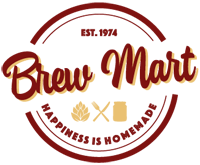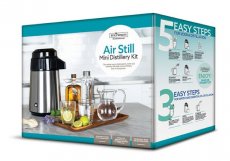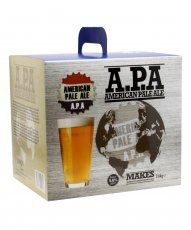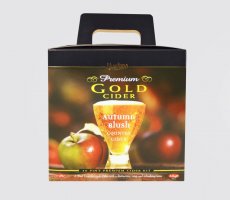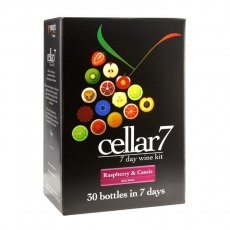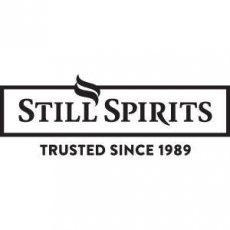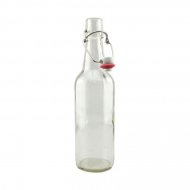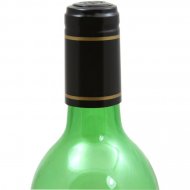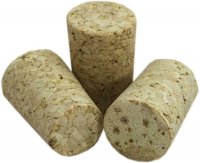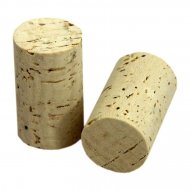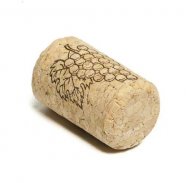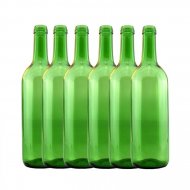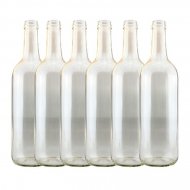Sign up to the Brew Mart newsletter for the latest news, offers & more
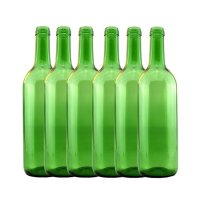
Wine Bottles
Home brewing wine can be a fun and rewarding hobby, and choosing the right bottles is an important part of the process.
Below are some things to consider when selecting bottles for your homemade wine:
Wine Bottles
Wine bottles are typically made of glass and are designed to hold and preserve wine. They come in various shapes, sizes, and colours depending on the type of wine they are intended to contain. The most common wine bottle size is 750 millilitres, but smaller and larger sizes are also available.
Wine bottles have a long and exciting history. The earliest evidence dates back to ancient Rome, where they were made of clay and often sealed with olive oil. Glass bottles were first produced in the 17th century, and cork as a stopper became popular in the 18th century.
Today, bottles are typically sealed with a cork or a screw cap, depending on the winemaker's preference. The shape of the wine bottle is also important, as it can affect the ageing process and the presentation of the wine. For example, Bordeaux-style bottles have straight sides and high shoulders, while Burgundy-style bottles have wider bodies and sloping shoulders.
Overall, bottles play an essential role in the storage, transportation, and presentation of wine, and they are an integral part of the wine industry.
-
Bottle size: Wine bottles come in different sizes, ranging from 187 ml to 1.5 liters. The most common size is 750 ml, which is equivalent to a standard bottle of wine. Choose a size that suits your needs, keeping in mind that larger bottles may require longer aging times.
-
Bottle colour: The colour of the bottle can affect the flavor and quality of your wine. Clear bottles allow light to pass through, which can cause the wine to spoil or develop off-flavors. Green or brown bottles offer better protection from light and are a better choice for long-term storage.
-
Closure type: There are several types of closures to choose from, including cork, screw cap, and crown cap. Corks are the traditional choice, but they require a special tool to insert and can be difficult to remove. Screw caps and crown caps are easier to use and provide a tight seal, but some wine enthusiasts believe they can affect the flavor of the wine.
-
Quality: Make sure to choose high-quality bottles that are designed for wine. Using substandard bottles can lead to leaks, breakage, or spoilage of your wine.
-
Labelling: Consider labelling your bottles with the name of the wine, the vintage, and any other important information, such as the grape variety or alcohol content. This will help you keep track of your wine collection and make it easier to identify each bottle.
-
750ml green wine bottles are a standard size and colour used in the wine industry. They are typically made of glass and are designed to protect the wine from light and oxygen, which can affect its taste and quality over time.
Many winemakers prefer green bottles because they block out a significant amount of ultraviolet light, which can cause the wine to become "light-struck" and develop an unpleasant taste. Additionally, green bottles can help regulate the wine's temperature, essential for ensuring it matures properly. -
750ml clear wine bottles are a standard size and type of glass bottle used for storing and serving wine. These bottles typically have a capacity of 750 millilitres, roughly equivalent to 25 fluid ounces or 3.3 cups.
Clear bottles are popular because they allow the colour and clarity of the wine to be easily visible. Clear bottles can be essential for assessing the quality and appearance of the wine and for aesthetic purposes.
In addition to wine, clear glass bottles of this size can be used for other beverages, such as spirits or liqueurs, and homemade bottles of vinegar, oils, or syrups. The bottles can also be repurposed for various crafts or DIY projects.
In summary, when selecting bottles for your home-brewed wine, consider the size, colour, closure type, quality, and labelling of the bottles to ensure the best possible outcome for your homemade wine.
Published March 2023
